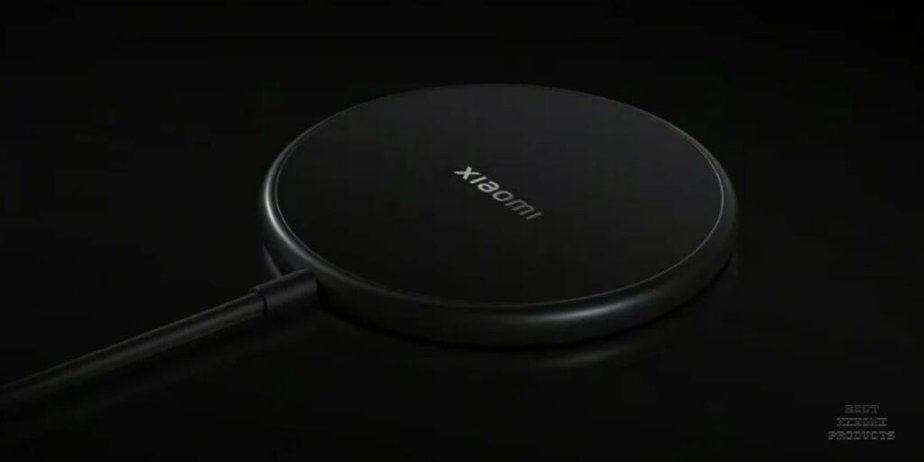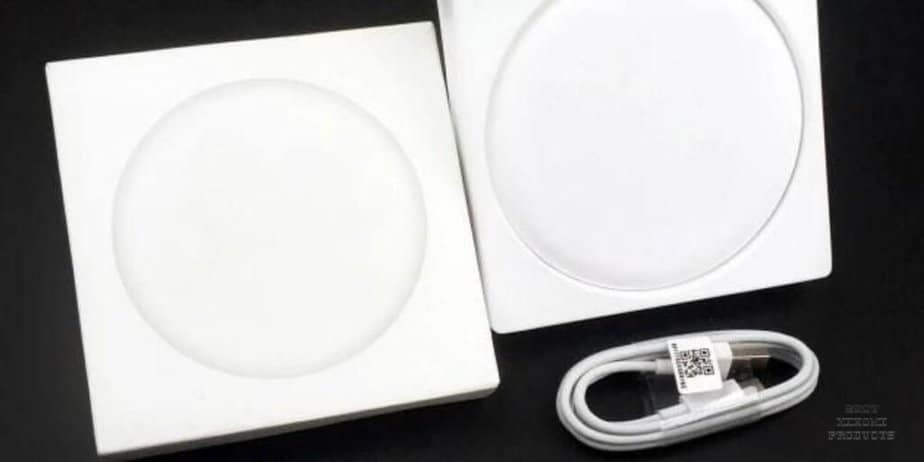
Does Xiaomi Support Wireless Charging? All You Need to Know in 2024
Share
Gone are the days of tangled wires and misplaced charging cables. Wireless charging has become increasingly popular, offering a convenient and cable-free way to power your smartphone.
But if you're a Xiaomi user, you might be wondering: does my phone support wireless charging?
This comprehensive guide dives deep into the world of Xiaomi and wireless charging. We'll explore:
- Which Xiaomi phones offer wireless charging capabilities
- The different types of wireless charging technologies Xiaomi utilizes
- The benefits and drawbacks of using wireless charging with your Xiaomi phone
- Tips for optimizing your wireless charging experience
Whether you're a recent Xiaomi convert or a seasoned Mi Fan, this guide will equip you with all the essential information you need to know about wireless charging and your Xiaomi device.
So, ditch the cable clutter and embrace the future of smartphone charging!
Also Read: Xiaomi Car Charger Review 2024 | Which is the Best Xiaomi Car Charger?
Does Xiaomi Support Wireless Charging?

Yes, Xiaomi does support wireless (Qi) charging on select smartphone models. Xiaomi has been actively incorporating wireless charging technology into its flagship and high-end devices.
If you're looking for a Xiaomi phone that supports wireless charging, you have several options to choose from. The Redmi K60 and Redmi K60 Pro 5G are among the Xiaomi devices that come with built-in wireless charging capabilities.
For those seeking flagship-level devices, Xiaomi has got you covered with their high-end offerings. The Xiaomi 11i 5G, Xiaomi 12, Xiaomi 12 Pro, Xiaomi 12 Pro (Dimensity), Xiaomi 12 Pro 5G, Xiaomi 12S, Xiaomi 12S Pro 5G, Xiaomi 12S Ultra, Xiaomi 13, and Xiaomi 13 Pro all support wireless charging.
If you're into gaming, Xiaomi's Black Shark lineup has got you covered. The Xiaomi Black Shark 3, Xiaomi Black Shark 3 Pro, and Xiaomi Black Shark 3S all offer wireless charging capabilities.
So while not every Xiaomi smartphone supports wireless charging, some of the mid-tier and premium smartphones do and having wireless charging capabilities enhances the overall user experience as well.
Which Xiaomi Smartphones Support Wireless Charging?
| Phone Model | Wattage |
| Xiaomi 14 Pro | 120W |
| Xiaomi 14 Ultra | 200W |
| Redmi K60 Pro | 30W |
| Redmi K60 | 30W |
| Xiaomi 13 Pro | 50W |
| Xiaomi 13 | 50W |
| Xiaomi 12S Ultra | 50W |
| Xiaomi 12S Pro | 50W |
| Xiaomi 12S | 50W |
| Xiaomi 12 Pro | 50W |
| Xiaomi 12 | 50W |
| Xiaomi MIX 4 | 50W |
| Xiaomi Mi 11 Ultra | 67W |
| Xiaomi Mi 11 Pro | 67W |
| Xiaomi Mi 11 | 50W |
| Xiaomi Mi 10S | 30W |
| Xiaomi Mi 10 Ultra | 50W |
| Xiaomi Mi 10 Pro | 30W |
| Xiaomi Mi 10 | 30W |
How Does Xiaomi Wireless Charging Work?
Wireless charging, also known as Qi charging, is a convenient method of charging electronic devices without the need for traditional wired connections.
Certain Xiaomi phones, including the Mi 13, utilize Qi charging technology to provide a seamless and cable-free charging experience.
The Mi Wireless Charging Pad serves as a universal wireless charger that can be used at home or in the workplace.

It features a metallic finish on its charging base and is equipped with a non-slip silicone material on its top and bottom surfaces to ensure that the phone stays securely in place during charging.
The charger is powered through a USB Type-C port.
To use the Mi Wireless Charging Pad, you need to connect it to a power source using the provided USB Type-C data cable and a compatible power adapter.
Once the charger is connected, a green LED light will blink three times, indicating that it is ready to use.
The Mi Wireless Charging Pad supports different charging speeds depending on the power adapter used.

Adapters supplying 5 V/1 A are not supported for charging. Regular charging at 5 W is supported by 5 V/2 A adapters, while fast charging at 10 W is supported by QC 2.0/QC 3.0 adapters.
So make the right selection based on the device you have and its compatibility.
To initiate wireless charging, simply place the Qi-compatible Xiaomi phone in the center of the Mi Wireless Charging Pad. The charger will automatically start charging the device.
When charging a Xiaomi phone using Qi charging, the process involves the transmission of power wirelessly from the Mi Wireless Charging Pad to the device.

Once the phone is placed on the charging pad, it establishes a connection with the pad through electromagnetic induction. The pad contains a coil that generates an alternating magnetic field, which induces a current in the coil inside the phone.
This current is then converted into usable voltage by the phone's internal circuitry, allowing it to charge the battery.
Qi charging technology ensures efficient power transfer and automatically adjusts the charging speed based on the device's capabilities and the power adapter used.
Throughout the charging process, the phone and the charging pad communicate to ensure optimal charging parameters and to monitor the charging status.
Do Xiaomi Phones Support Reverse Wireless Charging?

Yes, Xiaomi phones do support reverse wireless charging. Several models, including the Xiaomi 12S Ultra, 12S Pro, 12S, 12 Pro, 12, Mi 11 Ultra, Mi 11, Mi 10, Mi 10S, Mi 10 Pro, and Mi 10 Ultra, all have reverse wireless charging capabilities.
For example, the Xiaomi 12S Ultra, 12S Pro, and 12S all support 50W super-fast wireless charging and 10W reverse charging. The Xiaomi 12 Pro and Xiaomi 12 support 50W high-speed wireless charging, along with 10W reverse wireless charging.
The Xiaomi Mi 11 Ultra features 67W turbo-speed wireless charging, and the Xiaomi Mi 11 comes with 33W turbo wireless charging. Both models also support reverse wireless charging.
The Xiaomi Mi 10, Mi 10S, and Mi 10 Pro offer wireless charging support with a power of 30W.
Lastly, the Xiaomi Mi 10 Ultra supports
So if you have any of these smartphones then you can confidently use them to reverse charge any compatible devices like your Mi watch or Buds.
How to Enable Reverse Wireless Charging on Compatible Xiaomi Phones?

To enable reverse wireless charging on your Xiaomi device, follow these steps:
- Go to the Settings menu on your Xiaomi phone.
- Scroll down and select "Battery and performance."
- Within the Battery section, locate and tap on the option labeled "Reverse wireless charging."
By activating this option, you enable the reverse wireless charging feature on your Xiaomi device.
However, it's important to note that enabling reverse wireless charging will deactivate the NFC (Near Field Communication) connectivity on your phone.
If you frequently use NFC for tasks like mobile payments, it is recommended to activate reverse wireless charging only when you actually need to use it.
This way, you can ensure that NFC functionality remains available for your convenience during other times.
What to Do If Xiaomi Wireless Charging Does Not Work?
If you are facing issues with Xiaomi wireless charging not working, there are several steps you can take to troubleshoot and resolve the problem.
-
Check the Alignment: One common reason for wireless charging failure is improper alignment between your Xiaomi phone and the charging pad.
Ensure that your phone is placed directly on the charging pad, as even a few millimeters of misalignment can disrupt the charging process.
-
Remove the Phone Case: Certain phone cases or skins may interfere with wireless charging.
Try removing the case or any coverings to establish direct contact between your phone and the charging pad.
-
Verify the Device Compatibility: Check the specifications of your Xiaomi phone and the wireless charger you are using.
Most wireless chargers employ the Qi standard, but it's important to ensure that your phone supports Qi charging.
Similarly, some chargers may not be compatible with certain Xiaomi phone models. Confirm compatibility between your phone and the charger to avoid compatibility-related problems.
-
Ensure Proper Power Connection: While it may seem obvious, it's worth checking whether the wireless charger is correctly plugged in.
Make sure the charger is connected to a power source and that all cables and accessories are securely attached.
Sometimes, a loose connection or a charger not being turned on can cause wireless charging failures.
-
Software Updates and Restart: If the above steps didn't resolve the issue, consider checking for any pending software updates on your Xiaomi phone.
Manufacturers often release software patches to address bugs and improve functionality, including wireless charging performance.
Install any available updates and restart your phone before attempting wireless charging again.
Sometimes, temporary software malfunctions can hinder wireless charging capabilities, and a restart can rectify the problem.
By following these troubleshooting steps, you can often fix Xiaomi wireless charging issues without having to approach Xiaomi’s support team.
Conclusion
Xiaomi has emerged as a leading player in the smartphone market, offering a wide range of feature-rich devices at competitive prices.
While the company has made significant strides in terms of design and innovation, the support for wireless charging has been a topic of debate among Xiaomi enthusiasts.
The introduction of the Mi Wireless Charging Pad and other compatible accessories further solidifies Xiaomi's dedication to embracing this technology.
These accessories allow Xiaomi smartphone users to enjoy the convenience of wireless charging, eliminating the need for tangled cables and providing a seamless charging experience.
It is worth noting that while Xiaomi has made strides in supporting wireless charging, not all of their smartphone models are equipped with this feature.
Xiaomi's wireless charging support is mainly found in their flagship and premium models, with mid-range and entry-level devices still lacking this functionality. Therefore
Related